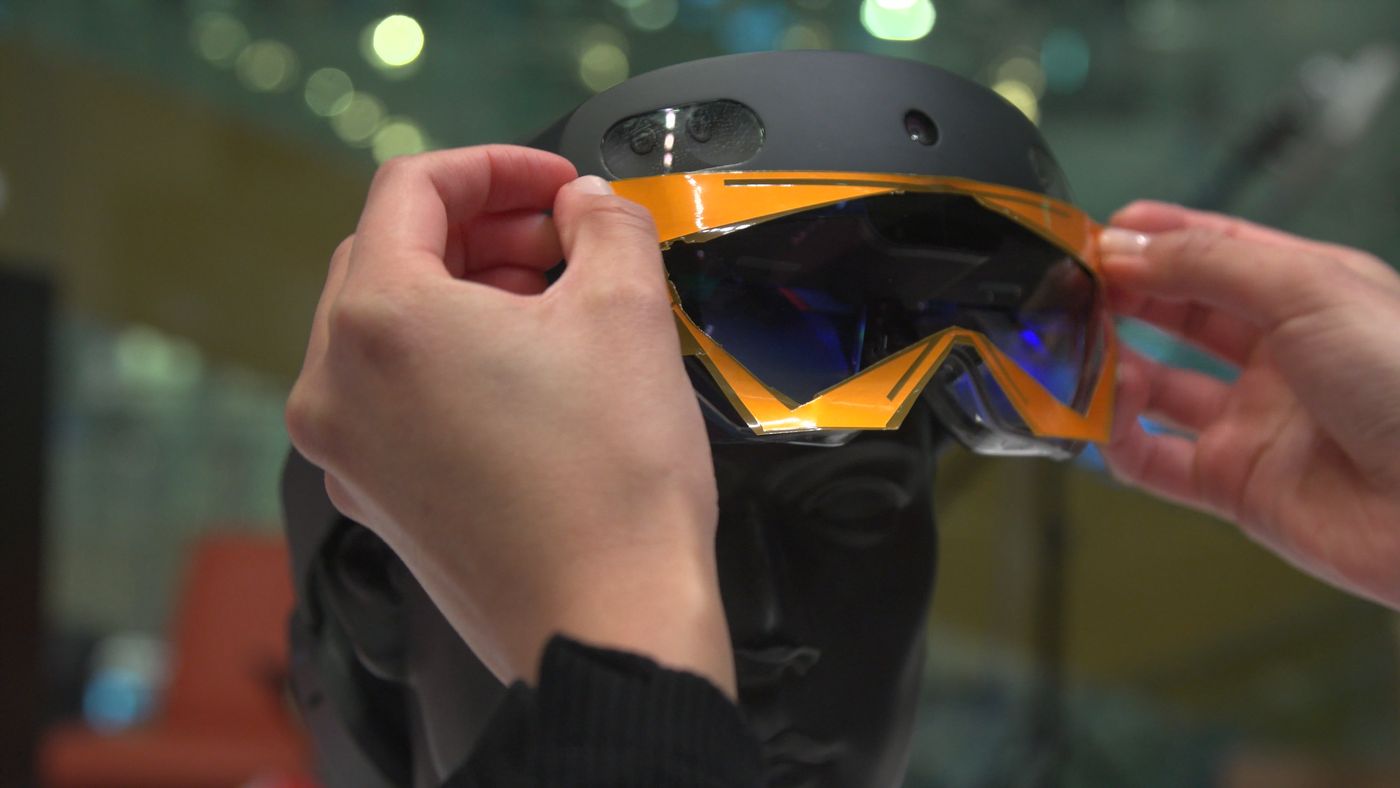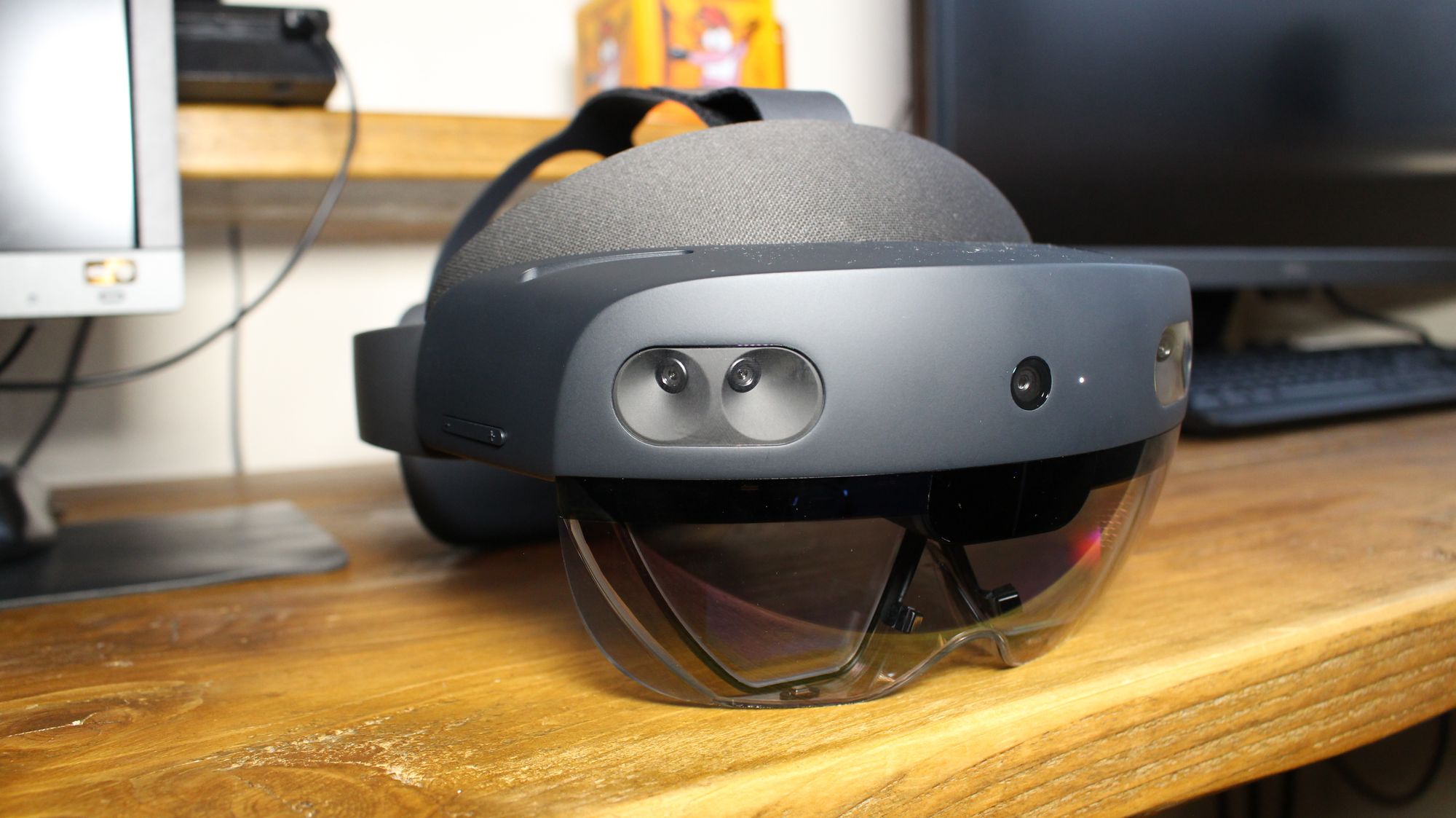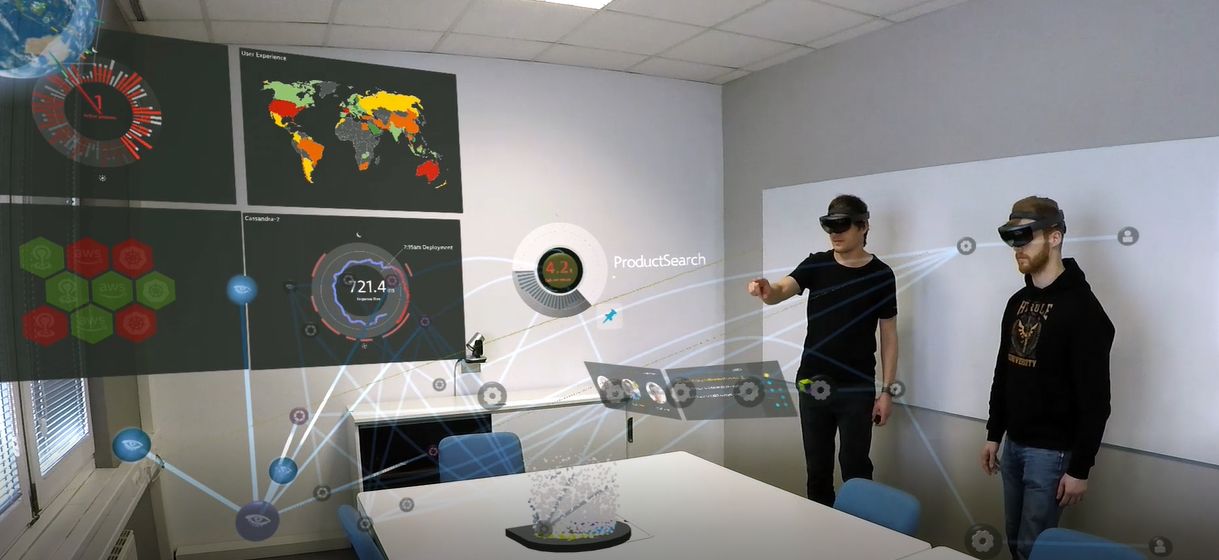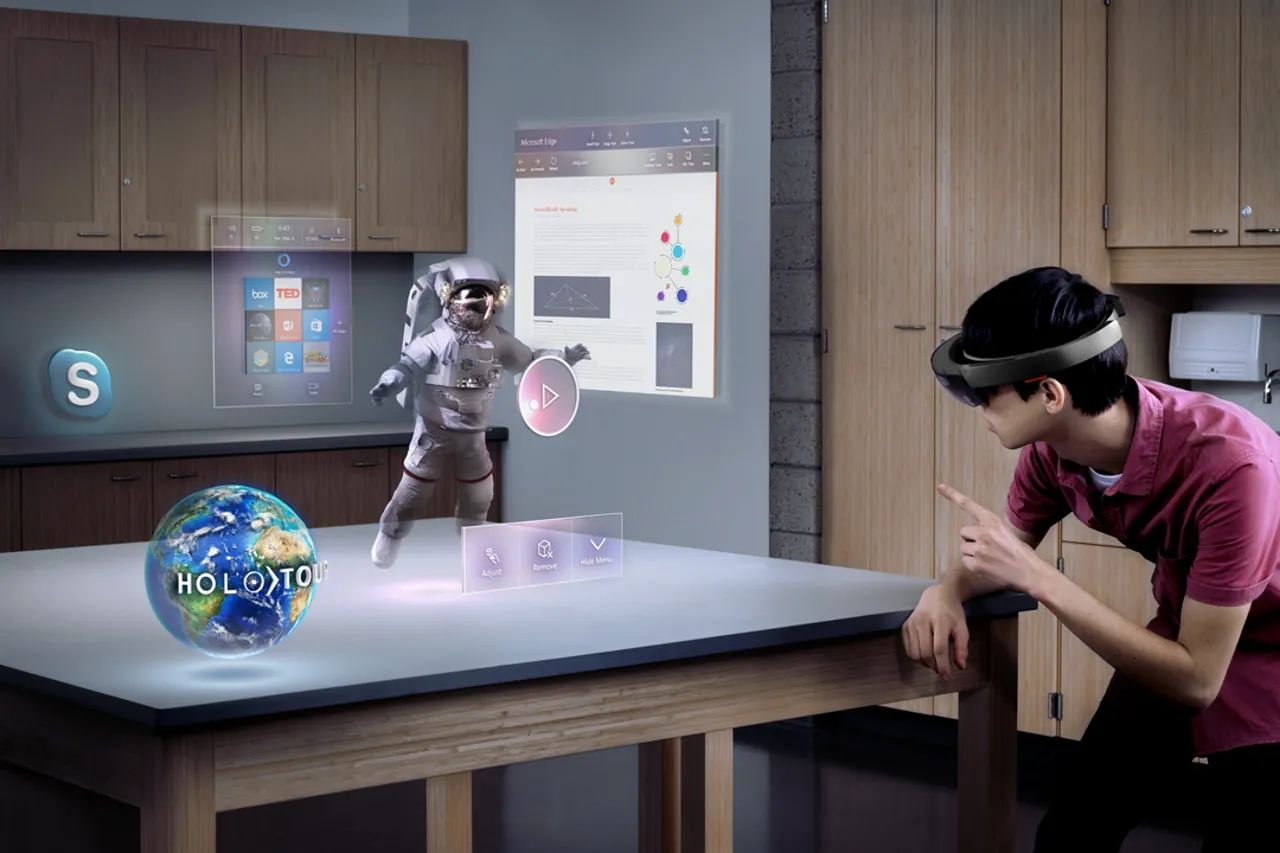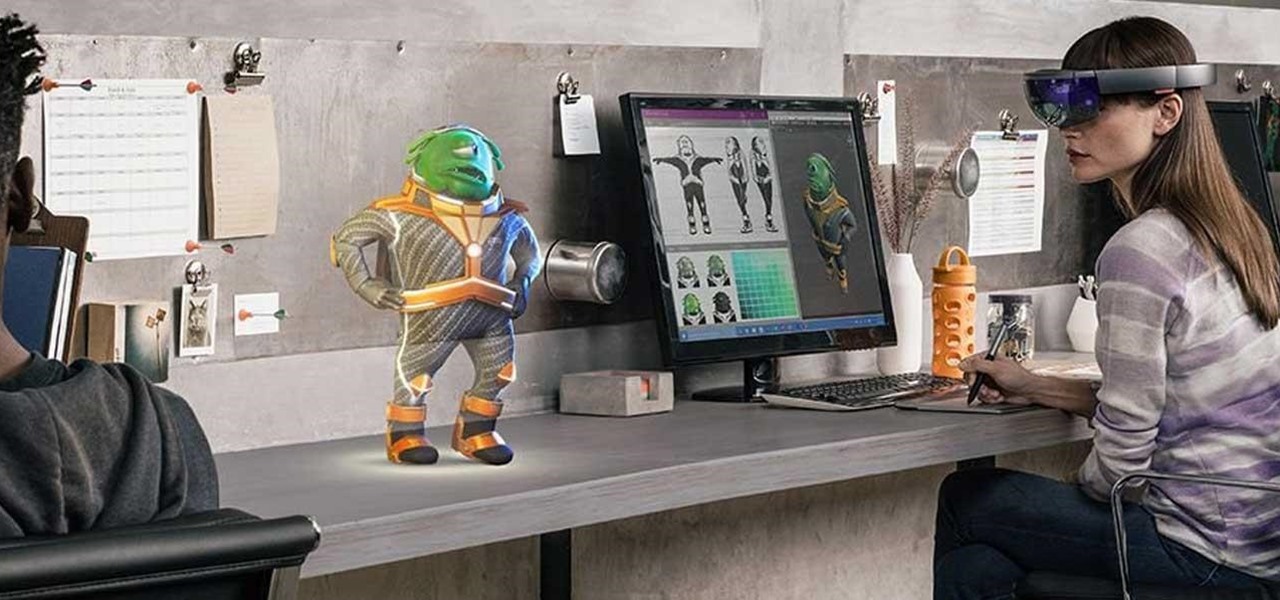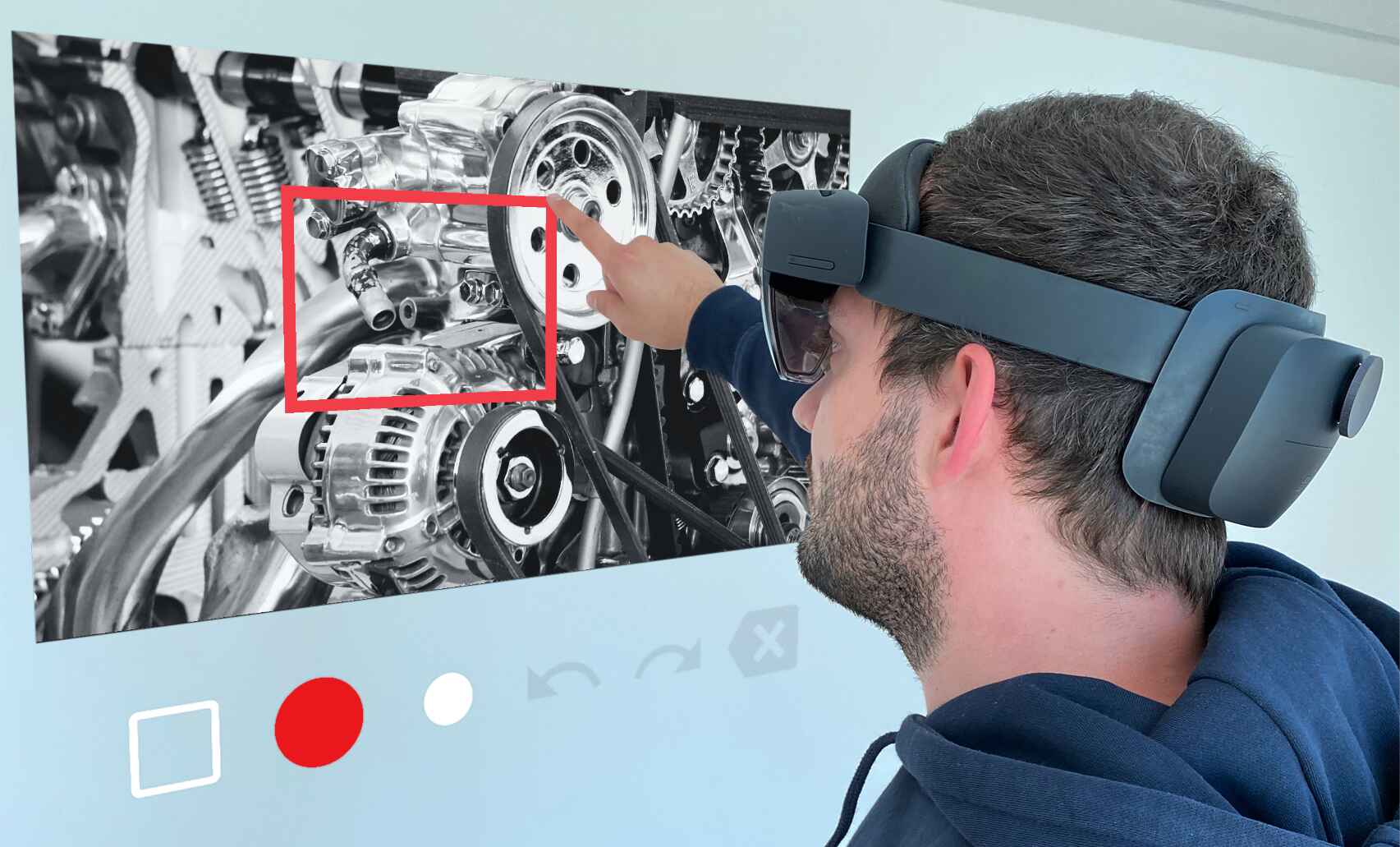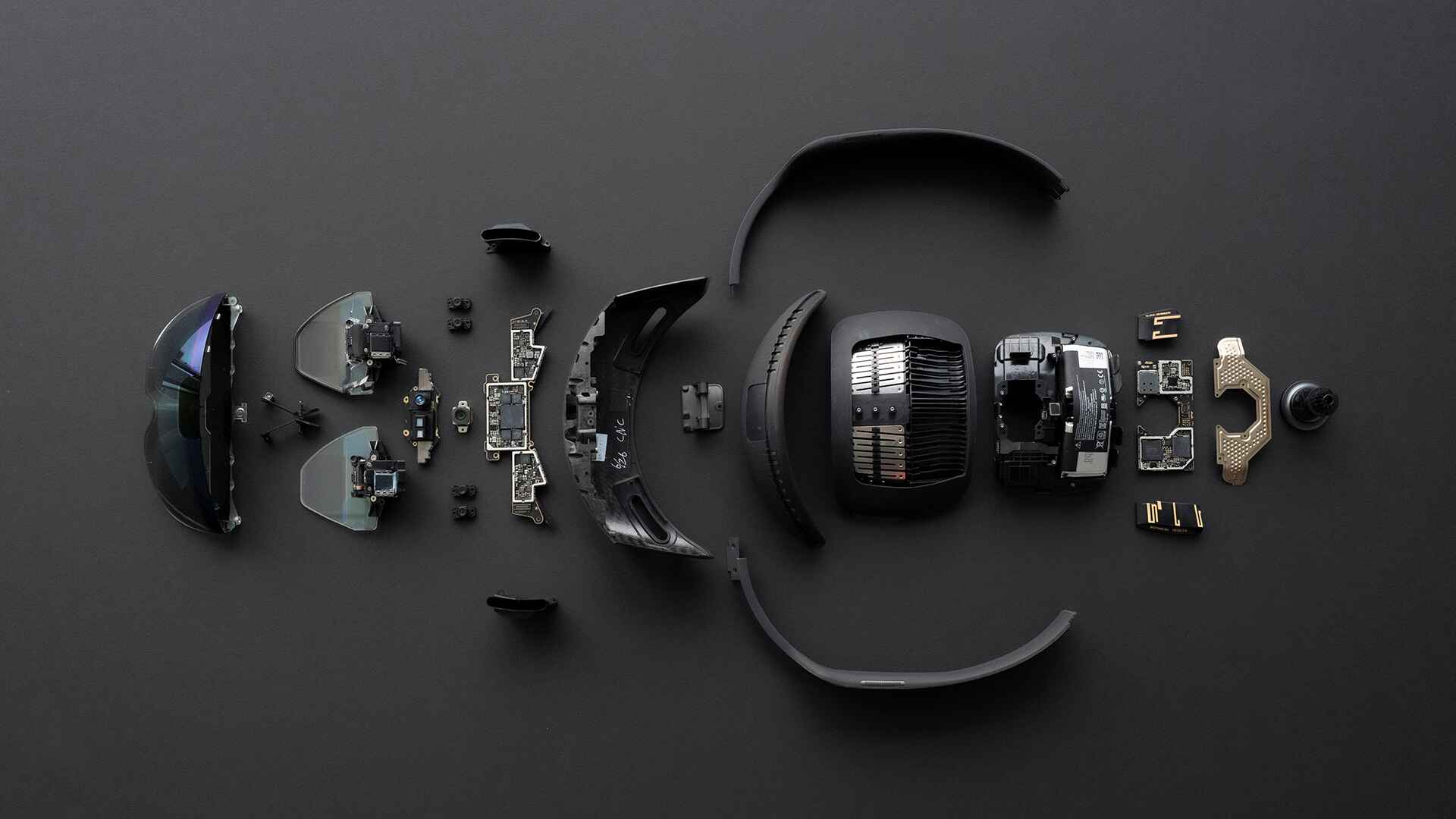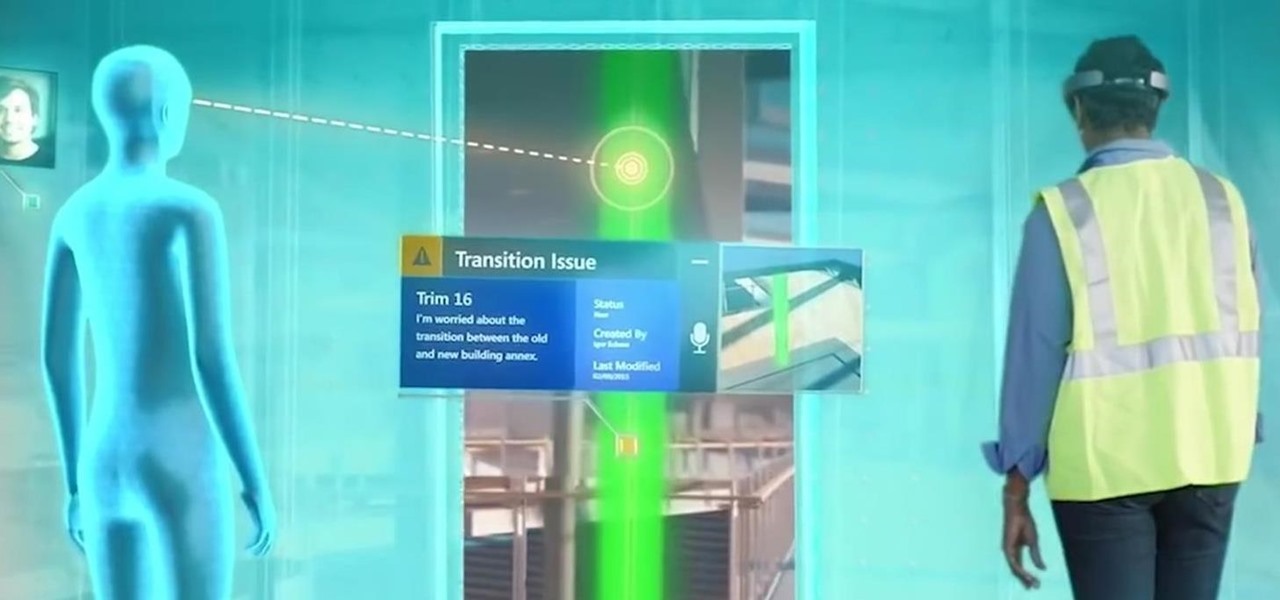Introduction
Welcome to the world of cutting-edge technology where invisible signals become visible with the power of HoloLens! In our increasingly connected world, Wi-Fi signals surround us everywhere, silently carrying information through the air. Although we might not be able to physically see them, these signals play a vital role in our daily lives, providing us with the ability to connect to the internet and access information on multiple devices simultaneously.
However, have you ever wondered what it would be like to actually see these invisible Wi-Fi signals? Thanks to the innovative capabilities of HoloLens, it is now possible to visualize Wi-Fi signals and gain a whole new perspective on our wireless environment.
HoloLens, created by Microsoft, is a groundbreaking augmented reality headset that allows users to interact with virtual content in the real world. With its advanced sensors, cameras, and holographic displays, HoloLens offers a seamless fusion of the physical and digital realms, enabling us to perceive digital information as if it were part of our environment.
By leveraging the power of HoloLens, we can go beyond the limitations of our physical senses and tap into a world of unseen signals. Imagine being able to actually see the Wi-Fi signals streaming through the air, visualizing their strength, direction, and network coverage in real-time. This technology opens up a whole new realm of possibilities, both in terms of understanding the wireless landscape and optimizing our connectivity.
In this article, we will delve into the fascinating world of Wi-Fi signal visualization with HoloLens. We will explore how HoloLens works, the different types of Wi-Fi signals, the challenges in visualizing them, and how HoloLens overcomes these obstacles. Additionally, we will discuss the benefits of this technology and explore the various applications it has in different fields.
So, fasten your seatbelts and prepare to enter the realm of invisible signals turned visible with the extraordinary capabilities of HoloLens!
What is HoloLens?
HoloLens is a cutting-edge augmented reality headset developed by Microsoft. It is designed to merge the virtual world with the real world, creating an immersive and interactive experience like never before. Unlike virtual reality (VR) headsets, which completely immerse users in a virtual environment, HoloLens allows users to see virtual content while still being aware of their physical surroundings.
The HoloLens device consists of a headset that features transparent lenses, spatial sound, and sensors, enabling it to map and track the user’s environment. With its advanced spatial mapping technology, the device scans the room, detects surfaces, and creates a virtual representation of the physical space. This allows virtual content to be seamlessly integrated into the user’s surroundings.
One of the standout features of HoloLens is its holographic display. This display projects images and animations into the user’s field of view, appearing as if they exist in the real world. Users can interact with these holograms through gestures, voice commands, and eye tracking, creating an incredibly natural and intuitive user experience.
With its powerful processors and sensors, HoloLens is capable of running complex applications and rendering high-quality holographic visuals in real-time. The device also includes an array of sensors, including cameras, motion sensors, and depth sensors, which track the user’s movements and gestures, allowing for precise and accurate interactions with virtual content.
While HoloLens has gained popularity in the gaming and entertainment industry, its potential extends far beyond mere entertainment. The device has found applications in various fields, including architecture, engineering, design, healthcare, education, and more. Its ability to merge virtual content with the real world has revolutionized the way we interact with digital information and has opened up new possibilities for collaboration and visualization.
In the next section, we will delve deeper into the working principle of HoloLens and explore how its advanced technology enables us to visualize Wi-Fi signals.
How Does HoloLens Work?
HoloLens utilizes a combination of advanced technologies to deliver its immersive augmented reality experience. From spatial mapping to gesture recognition, these technologies work seamlessly together to create a seamless blend of the virtual and physical worlds.
At the core of HoloLens is a set of sensors and cameras that capture and interpret the user’s physical environment. Using a technique called spatial mapping, these sensors scan the room and create a detailed 3D map of the surroundings. This information is then used to accurately position and anchor holograms in the real world, allowing users to interact with them as if they were physical objects.
The holographic display is another key component of HoloLens. It consists of transparent lenses that project light onto the user’s retina, creating images and animations that appear to float in front of them. This display technology, known as waveguide optics, enables users to see digital content overlaid on the real world without obstructing their vision.
To interact with holograms, HoloLens utilizes a combination of gesture recognition and voice commands. The device is equipped with cameras that track the user’s hand movements, allowing them to interact with virtual objects through gestures such as tapping, dragging, and resizing. Additionally, HoloLens features built-in microphones and speakers for voice commands, enabling users to control and manipulate holograms using their voice.
One of the standout features of HoloLens is its advanced spatial sound technology. The device is equipped with multiple speakers that deliver sound in a 3D spatial manner. This means that sound appears to come from specific locations in the user’s environment, enhancing the sense of immersion and realism.
Underneath the sleek exterior of HoloLens lies a powerful computer processor that handles the complex tasks of rendering graphics and running applications. This onboard computer allows HoloLens to deliver high-quality holographic visuals in real-time. It also includes various connectivity options such as Wi-Fi and Bluetooth, enabling users to access online content and connect to other devices.
Overall, HoloLens combines advanced sensors, display technology, gesture recognition, and spatial sound to create a truly immersive augmented reality experience. The device seamlessly integrates virtual content into the user’s real-world environment, opening up endless possibilities for entertainment, productivity, and innovation.
Wi-Fi Signals and HoloLens
Wi-Fi signals play a crucial role in our modern world, allowing us to connect to the internet wirelessly and access information on our various devices. These signals are essentially electromagnetic waves that transmit data between the router and our devices, enabling seamless communication and connectivity.
While we cannot physically see Wi-Fi signals with our naked eyes, HoloLens has the potential to change that. HoloLens can visualize Wi-Fi signals and provide a unique view of the wireless landscape. By leveraging its advanced sensors and holographic display, HoloLens can transform invisible signals into visible holograms, giving users a better understanding of the strength, direction, and coverage of Wi-Fi networks.
With HoloLens, users can now see the Wi-Fi signals around them as dynamic holograms that blend seamlessly into their physical environment. These holograms can depict the strength of the signal, represented by color intensity or patterns, allowing users to identify areas of weak or strong network coverage.
In addition to visualizing signal strength, HoloLens can also reveal the direction of Wi-Fi signals. By mapping the location and orientation of the router, HoloLens can overlay holographic arrows or indicators that show the direction in which the Wi-Fi signals are propagating. This feature can be particularly useful in optimizing Wi-Fi networks and ensuring optimal signal coverage in different parts of a building or space.
Another capability of HoloLens when it comes to Wi-Fi is the ability to visualize interference and signal congestion. HoloLens can detect and display holographic representations of other Wi-Fi networks in the vicinity, along with their signal strength. This allows users to identify potential sources of interference and take remedial measures to optimize their own network performance.
By visualizing Wi-Fi signals, HoloLens provides a unique perspective on the wireless landscape, enabling users to make more informed decisions when it comes to network optimization, troubleshooting, and even choosing the best spot for their router.
In the next section, we will explore the different types of Wi-Fi signals and the challenges involved in visualizing them with HoloLens.
Types of Wi-Fi Signals
Wi-Fi signals come in a variety of different types and frequencies, each with its own characteristics and uses. Understanding these different types of Wi-Fi signals is crucial when it comes to visualizing them with HoloLens and optimizing wireless networks.
The most common type of Wi-Fi signal is based on the IEEE 802.11 standard, which has several variations including 802.11a, 802.11b, 802.11g, 802.11n, 802.11ac, and 802.11ax.
802.11a operates in the 5 GHz frequency band and offers faster data transmission speeds and higher capacity. However, it has shorter range compared to other Wi-Fi types and can be more susceptible to signal interference from physical objects.
802.11b operates in the 2.4 GHz frequency band and provides slower data transmission speeds compared to 802.11a. It has a longer range and better ability to penetrate physical objects, making it suitable for use in homes and small offices.
802.11g is an enhancement of 802.11b, offering faster data speeds and better performance. It operates in the 2.4 GHz frequency band and is backward-compatible with 802.11b devices.
802.11n operates in both the 2.4 GHz and 5 GHz frequency bands, providing improved data transmission speeds and greater range. It introduced MIMO (Multiple-Input Multiple-Output) technology, which utilizes multiple antennas to enhance network performance and reduce signal interference.
802.11ac operates solely in the 5 GHz frequency band and offers even faster data transmission speeds and greater capacity compared to previous standards. It introduces features like beamforming and wider channel widths to improve network performance.
802.11ax, also known as Wi-Fi 6, is the latest Wi-Fi standard that operates in the 2.4 GHz and 5 GHz frequency bands. It brings further improvements in data speeds, capacity, and efficiency, especially in high-density environments.
Each of these Wi-Fi signal types has its own advantages and limitations, and the ability to visualize and understand their characteristics can greatly assist in network planning, optimization, and troubleshooting.
In the next section, we will explore the challenges involved in visualizing Wi-Fi signals with HoloLens and how it overcomes these obstacles.
Challenges in Visualizing Wi-Fi Signals
Visualizing Wi-Fi signals with HoloLens presents certain challenges due to the nature of these signals and the limitations of the technology. Overcoming these challenges is crucial to obtain accurate and informative visual representations of Wi-Fi networks.
One of the primary challenges is the invisibility of Wi-Fi signals to the human eye. Unlike visible light, Wi-Fi signals are electromagnetic waves that fall outside the visible spectrum. This means that HoloLens needs to rely on advanced sensors and algorithms to detect, interpret, and transform these signals into visible holograms.
Another challenge is the complex nature of Wi-Fi signal propagation. Wi-Fi signals can be affected by obstacles, such as walls and physical objects, which can weaken or distort the signal. Furthermore, interference from other electronic devices, such as microwaves or cordless phones, can impact signal quality. HoloLens needs to take these factors into account when visualizing Wi-Fi signals to provide an accurate depiction of the wireless environment.
Additionally, HoloLens must overcome the challenge of accurately representing signal strength and coverage. Wi-Fi signals can vary in strength depending on factors like distance from the router, obstructions, and interference. HoloLens must employ algorithms and data analysis to translate signal strength into visual cues, such as color intensity or patterns, to convey the strength and coverage of Wi-Fi networks effectively.
Furthermore, HoloLens needs to dynamically update its visualization based on changes in the wireless environment. Wi-Fi signals can fluctuate in strength as devices connect and disconnect from the network or when environmental conditions change. HoloLens must continuously monitor and update the visual representation of Wi-Fi signals to provide real-time information to the user.
Finally, HoloLens faces the challenge of displaying an intuitive and understandable representation of Wi-Fi signals. The visualization should be user-friendly, allowing users to easily interpret the information presented and take appropriate actions. HoloLens must strike a balance between providing comprehensive details about Wi-Fi networks and avoiding overwhelming the user with excessive information.
Despite these challenges, HoloLens continues to push the boundaries of technology to provide a comprehensive and visually engaging representation of Wi-Fi signals. By overcoming these obstacles, HoloLens opens up new possibilities for optimizing wireless networks, enhancing connectivity, and improving the overall user experience.
Using HoloLens to See Wi-Fi Signals
HoloLens offers a unique and innovative solution for visualizing Wi-Fi signals in real-time, providing users with valuable insights into the wireless landscape. With its advanced sensors and holographic display, HoloLens transforms invisible Wi-Fi signals into visible holograms, allowing users to better understand and optimize their wireless networks.
When using HoloLens to see Wi-Fi signals, users can observe the strength, direction, and coverage of these signals as holographic representations seamlessly integrated into their physical environment. The visual representation of Wi-Fi signals can be customized to portray signal strength through color intensity, patterns, or other visual cues. This enables users to identify areas of weak or strong network coverage, helping them optimize their network placement and improve connectivity.
In addition to visualizing signal strength, HoloLens can also display the direction of Wi-Fi signals. By mapping the location and orientation of the router, HoloLens overlays holographic arrows or indicators that depict the direction in which the Wi-Fi signals propagate. This information empowers users to optimize their network setup by ensuring optimal signal coverage in different areas of a space.
Furthermore, HoloLens can provide insights into potential interference and signal congestion. By detecting and displaying holographic representations of other Wi-Fi networks in the vicinity, users can identify and analyze potential sources of interference. This enables them to make informed decisions to optimize their network performance and minimize disruptions caused by signal congestion.
By visualizing Wi-Fi signals with HoloLens, users gain a comprehensive understanding of their wireless environment, allowing them to make data-driven decisions to enhance connectivity and optimize network performance. Whether it’s ensuring optimal router placement, minimizing signal interference, or identifying areas of weak coverage, HoloLens provides a powerful tool for network optimization and troubleshooting.
Furthermore, HoloLens opens up possibilities for collaboration and communication regarding Wi-Fi networks. Multiple users equipped with HoloLens can visualize and analyze Wi-Fi signals together in real-time, facilitating discussions and problem-solving to collectively improve network performance and coverage.
Overall, HoloLens revolutionizes the way we see and interact with Wi-Fi signals. By providing a visual representation of these signals, HoloLens empowers users to optimize their wireless networks, enhance connectivity, and improve the overall user experience.
Benefits of Visualizing Wi-Fi Signals with HoloLens
The ability to visualize Wi-Fi signals with HoloLens offers numerous benefits, revolutionizing the way we interact with wireless networks and optimizing our connectivity. Here are some key advantages of using HoloLens to visualize Wi-Fi signals:
1. Enhanced Network Optimization: HoloLens provides users with a unique perspective on their Wi-Fi networks, allowing them to identify areas of weak signal coverage, signal interference, and congestion. By visualizing these aspects, users can make informed decisions to optimize their network placement, improve signal strength, and minimize network disruptions.
2. Simplified Troubleshooting: Wi-Fi connectivity issues can be frustrating to diagnose and resolve. With HoloLens, troubleshooting becomes more intuitive and efficient. Users can visually identify potential sources of interference or weak signal areas, allowing for targeted troubleshooting and quicker resolution of network issues.
3. Improved Network Planning: Whether setting up a new network or expanding an existing one, visualizing Wi-Fi signals with HoloLens provides valuable insights for network planning. Users can determine the optimal placement of routers, access points, and network extenders to ensure maximum coverage and minimal signal degradation.
4. Seamless Collaboration: HoloLens enables multiple users to visualize and analyze Wi-Fi signals simultaneously, fostering collaboration among teams. This allows for better communication, problem-solving, and decision-making when it comes to optimizing network performance or addressing connectivity challenges.
5. Real-Time Monitoring and Optimization: HoloLens provides real-time updates on Wi-Fi signal strength, coverage, and interference. This allows users to continuously monitor their network performance and make adjustments as needed to maintain optimal connectivity in dynamic environments.
6. Empowered Field Technicians: For IT professionals and field technicians responsible for managing and troubleshooting networks, HoloLens offers a powerful tool. Whether onsite at a client’s location or in a complex infrastructure environment, technicians can use HoloLens to visualize Wi-Fi signals and efficiently troubleshoot network issues.
7. Improved User Experience: Visualizing Wi-Fi signals with HoloLens leads to an enhanced user experience in areas where connectivity is crucial, such as gaming, streaming, and video conferencing. Users can optimize their network setup, ensure seamless connectivity, and reduce disruptions, resulting in a more enjoyable and productive experience.
8. Future Expansion and Innovation: As technology and network standards evolve, HoloLens provides a platform for future expansion and innovation. With its ability to adapt and integrate new features, HoloLens can accommodate emerging Wi-Fi technologies, ensuring users remain at the forefront of wireless networking advancements.
The benefits of visualizing Wi-Fi signals with HoloLens extend beyond simplifying network management and optimization. By maximizing connectivity, improving troubleshooting efficiency, and promoting collaboration, HoloLens empowers users to unlock the full potential of their Wi-Fi networks in a visually immersive and intuitive way.
Applications of Wi-Fi Signal Visualization with HoloLens
The ability to visualize Wi-Fi signals with HoloLens opens up a wide range of applications across various industries. Here are some key areas where Wi-Fi signal visualization with HoloLens can be highly beneficial:
1. Network Planning and Optimization: HoloLens can assist in planning and optimizing Wi-Fi networks in large-scale environments such as office buildings, hospitals, or campuses. By visualizing Wi-Fi signal coverage, network administrators can strategically place access points and adjust settings to ensure seamless connectivity and minimal signal interference.
2. Architecture and Interior Design: HoloLens can be used by architects and interior designers to visualize Wi-Fi signal propagation within buildings. This allows them to design spaces that optimize Wi-Fi coverage and mitigate dead zones, ensuring reliable and efficient wireless connectivity for occupants.
3. Internet of Things (IoT) Implementations: As IoT devices become more prevalent, visualizing Wi-Fi signals with HoloLens can assist in deploying and managing IoT networks. Users can identify optimal locations for IoT device placement to ensure robust connectivity and reliable data transmission.
4. Infrastructure and Facility Management: HoloLens can aid facility managers in monitoring and optimizing Wi-Fi networks within large venues such as stadiums, convention centers, or shopping malls. Real-time visualization of Wi-Fi signals enables efficient troubleshooting and ensures a seamless wireless experience for visitors.
5. Education and Training: HoloLens can enhance education and training environments by allowing students and trainers to visualize Wi-Fi signals in classroom settings. This helps them understand the impact of physical objects, interference, and network placement on wireless connectivity, fostering a deeper understanding of network concepts.
6. Healthcare and Telemedicine: In healthcare settings, visualizing Wi-Fi signals with HoloLens can assist in ensuring reliable connectivity for medical devices, facilitating seamless communication and data transmission. It can also aid telemedicine professionals in assessing the quality of Wi-Fi connections while providing remote patient care.
7. Retail and Hospitality: HoloLens can be utilized by retail and hospitality industries to optimize customer experiences. Visualizing Wi-Fi signals allows businesses to identify areas of poor signal strength or potential interference, enabling them to provide reliable and high-speed Wi-Fi to patrons.
8. Industrial Environments: In industrial settings such as warehouses or manufacturing facilities, HoloLens can help manage and troubleshoot Wi-Fi networks supporting critical operations. Visualizing Wi-Fi signals enables quick detection of areas with poor connectivity, reducing potential disruptions and improving productivity.
9. Research and Development: Researchers and network engineers can utilize HoloLens to gain insights into Wi-Fi signal behavior and performance in various scenarios. This can aid in the development of new networking technologies, protocols, and algorithms, leading to advancements in wireless communication.
The applications of Wi-Fi signal visualization with HoloLens are diverse, spanning across industries and sectors. By leveraging the power of augmented reality, HoloLens enables users to optimize network performance, enhance connectivity, and make informed decisions regarding wireless networks in a visually immersive and intuitive manner.
Conclusion
In conclusion, the ability to visualize Wi-Fi signals with HoloLens brings numerous benefits and opens up exciting possibilities for optimizing wireless networks. HoloLens offers a unique and immersive experience, allowing users to see Wi-Fi signals as holograms seamlessly integrated into their environment.
By visualizing Wi-Fi signals, users gain insights into signal strength, coverage, and potential sources of interference. This information enables more effective network planning, troubleshooting, and optimization. HoloLens empowers users to make data-driven decisions to enhance connectivity and ensure reliable wireless communication.
Furthermore, HoloLens facilitates collaboration and communication among team members, providing a shared visualization of Wi-Fi signals. This fosters better problem-solving, decision-making, and knowledge sharing, ultimately leading to more efficient network management.
The applications of Wi-Fi signal visualization with HoloLens extend across various industries, including network planning, architecture, IoT implementations, healthcare, education, and more. From optimizing network coverage in large venues to enhancing the wireless experience in retail settings, HoloLens proves to be a versatile tool with diverse applications.
In addition to its immediate benefits, HoloLens sets the stage for future advancements in wireless networking. With the ability to adapt to emerging technologies and integrate new features, HoloLens ensures users remain at the forefront of Wi-Fi innovation.
In a world where wireless connectivity is increasingly crucial, visualizing Wi-Fi signals with HoloLens offers a paradigm shift in how we interact with our networks. It provides a unique perspective that goes beyond traditional monitoring tools and unlocks a deeper understanding of the wireless landscape.
As HoloLens continues to evolve and improve, we can expect even more exciting capabilities and applications in the realm of Wi-Fi signal visualization. With HoloLens, the once invisible world of Wi-Fi signals is transformed into a vivid holographic experience, empowering users to optimize their networks, enhance connectivity, and shape the future of wireless communication.







